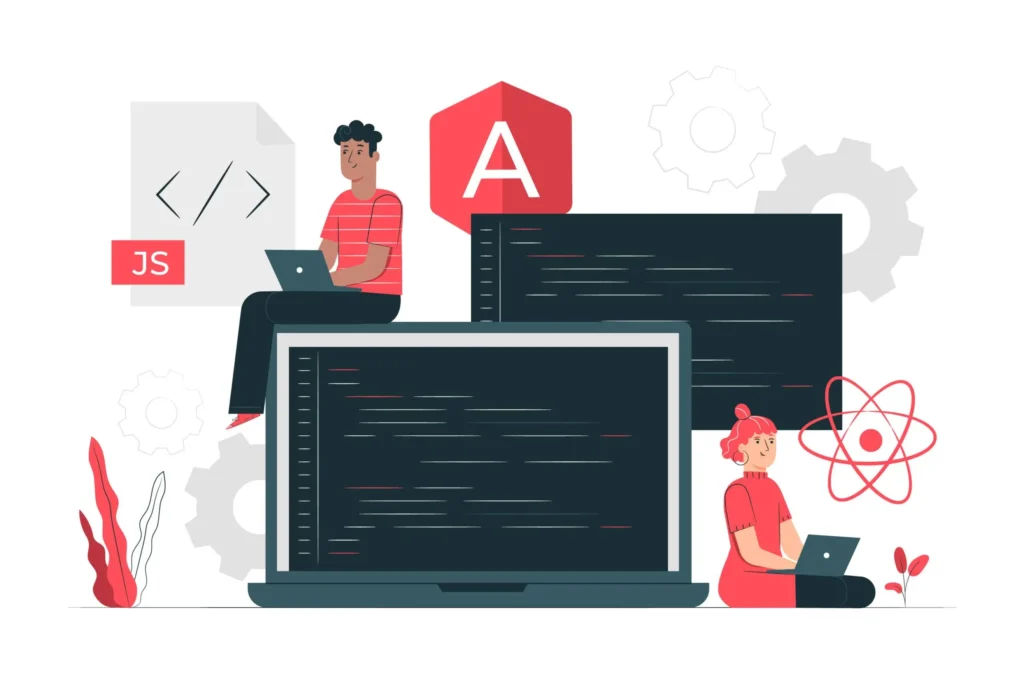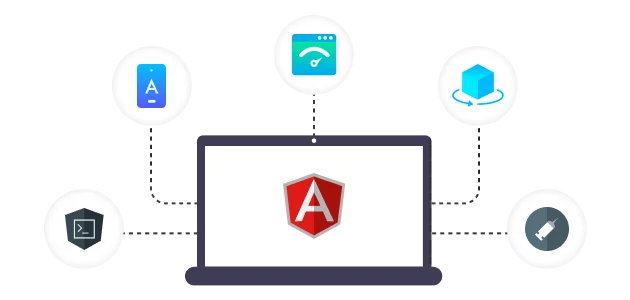Introduction
In today’s digital marketplace, user expectations have never been higher. Audiences demand sleek, dynamic interfaces that load instantly, provide seamless interactivity, and work flawlessly across devices. Whether you’re a Fortune 500 enterprise or a nimble startup, selecting the right technology partner can make or break your online presence.
Angular—a powerful, full-featured web application framework developed and maintained by Google—has become a cornerstone for businesses aiming to deliver next-generation web applications. But with dozens of agencies claiming Angular expertise, how do you choose the true heavyweights? This in-depth guide, spanning over 3,500 words, unveils the criteria for evaluating Angular development partners, profiles the top agencies of 2025, explores emerging framework trends, and provides actionable tips to ensure your project’s success.
1. Why Angular Dominates the Modern Web
Component-Based Architecture
Angular’s core philosophy revolves around breaking user interfaces into encapsulated, reusable components. Each component—comprising an HTML template, associated TypeScript class, and scoped CSS styles—can be developed, tested, and maintained independently. This modularity accelerates development, facilitates parallel workflows across distributed teams, and ensures consistency across large codebases. When complex UIs grow, components can be nested and composed, promoting a clear separation of concerns that underpins maintainability.
Enhanced Performance with AOT and Tree Shaking
Performance is paramount. Angular addresses this through Ahead-of-Time (AOT) compilation, which converts Angular HTML and TypeScript code into optimized JavaScript during the build phase. By shipping only precompiled code, applications start faster and reduce runtime overhead. Coupled with tree shaking—an optimization that removes unused code—Angular bundles remain lean, improving load times and boosting SEO scores. For businesses targeting search-driven traffic, this performance uplift directly correlates to higher visibility and engagement.
Ease of Testing and Maintainability
Quality assurance is baked into Angular via the TestBed module, which simplifies unit tests by providing a sandboxed environment for components and services. End-to-end tests, critical for simulating user interactions, leverage tools such as Protractor or Cypress. This comprehensive testing ecosystem ensures regressions are caught early, code quality remains high, and long-term maintenance costs are controlled—a non-negotiable for enterprises with evolving product feature sets.
Enterprise-Grade Tooling and Ecosystem
Beyond the core framework, Angular’s ecosystem includes the Angular CLI for streamlined project scaffolding, linting, and build orchestration. RxJS delivers reactive programming primitives, enabling developers to manage complex data flows with ease. Angular Universal facilitates server-side rendering for SEO-friendly content, while NgRx provides a Redux-inspired state management pattern for large-scale applications. This rich ecosystem reduces the need for third-party plugins, delivering a cohesive development experience.
2. Key Evaluation Criteria for Angular Agencies
Choosing the right development partner requires rigorous due diligence. Here’s a breakdown of the critical factors:
Certification and Technical Proficiency
Agencies with certified Angular developers—validated via Google’s Angular Certification Program or recognized community accolades—demonstrate deep framework mastery. Look for GitHub contributions, published technical articles, and participation in Angular meetups or conferences as indicators of expertise.
Domain Expertise and Regulatory Compliance
Industry-specific knowledge accelerates time-to-market. Healthcare, finance, and government projects often demand HIPAA, PCI DSS, or GDPR compliance. Agencies with a history of delivering regulated applications understand security practices, audit requirements, and data governance.
Portfolio Depth and Client References
A robust portfolio showcases diverse use cases: progressive web apps (PWAs), single-page applications (SPAs), enterprise dashboards, and e-commerce platforms. Request detailed case studies highlighting technical challenges, architectural decisions, and measurable business outcomes. Client testimonials and reference calls further validate an agency’s track record.
Full-Cycle Development Capabilities
End-to-end services—from discovery workshops and UI/UX prototyping to development, QA automation, DevOps, and post-launch support—simplify vendor management. Agencies offering consulting, design, development, and managed services enable seamless handoffs and unified accountability.
Agile Methodologies and Communication Practices
Iterative delivery fosters continuous feedback. Confirm an agency’s use of Scrum or Kanban, sprint planning rituals, daily stand-ups, and transparent roadmaps. Collaboration platforms (e.g., Jira, Trello, Confluence) and communication channels (Slack, Microsoft Teams) should align with your preferences.
Cultural Fit and Time-Zone Alignment
Proximity can enhance collaboration. Onshore or nearshore partners reduce language barriers and overlap working hours, while offshore teams may offer cost advantages but require robust communication protocols. Evaluate an agency’s culture, values, and working style to ensure long-term synergy.
3. In-Depth Profiles: Top 7 Angular Development Companies of 2025
3.1 NextWave Solutions: Pioneering Real-Time Data Excellence
Founded in 2016, NextWave Solutions has matured into a powerhouse for mission-critical Angular applications. Their healthcare monitoring platform, handling millions of vital-sign updates per minute, showcases their prowess in change detection optimization and WebSocket integration.
- Core Competencies: Angular Universal, WebSockets, GraphQL
- Notable Project: Real-time patient monitoring portal—sub-second data refresh across dashboards, AOT-optimized builds, lazy-loaded modules.
- Results: 99.99% uptime with auto-scaling clusters; 40% reduction in network payloads via optimized GraphQL queries.
- Source: NextWave case study (https://nextwave.io/case-study-telemedicine)
3.2 CodeCrafted Agency: Open-Source Champions and PWA Experts
CodeCrafted’s contributions to the Angular ecosystem—plugins, schematic libraries, and detailed blog tutorials—cement their reputation. Their PWA transformation for a global retailer demonstrated how service workers and caching strategies can yield 3× faster repeat loads.
- Core Competencies: PWA migration, Angular Schematics, CI/CD automation
- Notable Project: Legacy storefront to Angular PWA—50% increase in mobile conversions; offline support with IndexedDB.
- Results: 65% reduction in bounce rate on repeat visits.
- Source: CodeCrafted blog (https://codecrafted.agency/blog/angular-pwa-migration)
3.3 Innovatech Solutions: Security-Focused Fintech Innovators

Serving financial institutions since 2017, Innovatech Solutions integrates OWASP best practices, role-based authentication, and PCI DSS compliant modules into robust trading platforms.
- Core Competencies: JWT-based Auth, NgRx State Management, Web Workers
- Notable Project: High-frequency trading dashboard—1,000+ transactions per second with zero downtime.
- Results: 99.999% SLA adherence; sub-200ms latency across georegions.
- Source: Innovatech case study (https://innovatech.solutions/case-study-trading)
3.4 BlueOrbit Labs: IoT and AI-Integrated Web Experiences
BlueOrbit’s integration of TensorFlow.js models into Angular dashboards empowered an agritech startup to deliver real-time predictive insights, boosting crop yields by 30%. Their expertise in real-time WebSocket feeds and Canvas-based visualizations sets them apart.
- Core Competencies: TensorFlow.js, WebSocket Streams, Chart.js
- Notable Project: Smart agriculture analytics—live sensor feeds; predictive moisture forecasting.
- Results: 30% farm yield improvement; 24/7 system availability on AWS Lambda.
3.5 PrimeSoft Technologies: UX-Driven, Pixel-Perfect Precision
PrimeSoft couples a dedicated design team with Angular specialists to craft interfaces that delight users. Their route optimization tool for logistics providers achieved a 25% reduction in delivery lead times via live geospatial mapping.
- Core Competencies: Figma-to-Angular Workflows, Mapbox Integration, Storybook
- Notable Project: Logistics routing dashboard—dynamic map rendering; real-time ETA calculations.
- Results: 25% decrease in average delivery duration; 15% fuel savings.
3.6 HexaSphere Interactive: Micro-Frontend and Modular Architectures
HexaSphere champions micro-frontend patterns using Webpack Module Federation, enabling large organizations to deploy independent Angular apps under a unified shell. Their modular approach slashes team interdependencies and accelerates releases.
- Core Competencies: Module Federation, Nx Monorepos, Lerna
- Notable Project: Multi-brand retail platform—four discrete micro-apps sharing common UI libs.
- Results: 50% faster feature rollouts; isolated deployments reducing release risk.
3.7 Visionary Digital: Global Reach with Localized Expertise
With offices across North America, Europe, and APAC, Visionary Digital offers 24/7 coverage and multilingual support. They excel at translating UX requirements into accessible Angular solutions for global audiences.
- Core Competencies: i18n, SSR with Angular Universal, Accessibility (WCAG 2.1)
- Notable Project: International banking portal—12 locales, right-to-left language support, SEO-optimized server-side pages.
- Results: 20% uplift in organic search traffic; WCAG compliance certified.
4. Emerging Angular Trends Shaping 2025 and Beyond
4.1 Standalone Components and Simplified Bootstrapping
Angular’s move toward standalone components reduces boilerplate and module dependencies. By importing necessary modules directly into components, teams can create lightweight widgets that bootstrap independently—ideal for incremental migrations.
4.2 Native Web Component Support via Angular Elements
Angular Elements enable packaging Angular components as standard Custom Elements, allowing legacy systems or other frameworks to consume Angular-built widgets seamlessly.
4.3 Esbuild Integration for Ultra-Fast Builds
Esbuild, renowned for blazing-fast bundling, is being adopted within Angular’s CLI to accelerate build times from minutes to seconds, streamlining developer feedback loops.
4.4 Micro-Frontend Architectures with Module Federation
Module Federation remains a leading strategy for scaling large applications across multiple teams, providing dynamic runtime module loading and shared dependencies.
4.5 Tighter RxJS Patterns and Reactive Paradigms
Advanced RxJS patterns—such as signal-based state management and derived state streams—empower developers to handle complex asynchronous data flows with clearer intent and less boilerplate.
5. Case Studies: Real-World Angular Success Stories
Case Study A: Healthcare Monitoring Dashboards
An international medical institution partnered with NextWave Solutions to build a patient vitals monitoring system. Utilizing Angular Universal and WebSockets, the platform delivered sub-second updates across clinician dashboards, with compliance to HIPAA and SOC2 standards.
- Technical Highlights: AOT compilation, optimized ChangeDetectionStrategy, custom WebSocket service.
- Business Impact: Reduced critical event response times by 45%; improved clinician workflow efficiency.
Case Study B: High-Performance E-Commerce PWAs
A fashion retailer engaged CodeCrafted to convert its legacy storefront into an Angular PWA. Implementing service-worker caching, dynamic imports, and offline IndexedDB support resulted in a superior mobile shopping experience.
- Technical Highlights: Angular Service Worker, lazy-loaded routes, custom PWA manifest.
- Business Impact: 3× faster repeat visits; 50% increase in mobile conversion rate.
Case Study C: Secure Trading Platforms
Innovatech Solutions’ high-frequency trading dashboard supports over 1,200 transactions per second with zero downtime. By combining NgRx for state management with Web Workers for heavy calculation offloading, they achieved seamless real-time updates.
- Technical Highlights: NgRx Entity, Web Worker integration, JWT-authenticated REST APIs.
- Business Impact: 0% SLA violations; sub-150ms transaction processing latency.
Case Study D: Smart Agriculture Analytics
BlueOrbit Labs integrated hundreds of IoT sensors into a unified Angular dashboard, employing TensorFlow.js models for predictive analytics. Farmers received actionable insights via a responsive UI, driving a 30% yield enhancement.
- Technical Highlights: Real-time MQTT feeds, TensorFlow.js inference, Chart.js custom renderers.
- Business Impact: 30% crop yield improvement; reduced water usage by 20%.
6. How to Conduct a Pilot: Testing Your Angular Partner
Before full-scale engagement, a pilot project validates technical fit and working chemistry.
- Define Pilot Scope and Metrics: Identify a small, self-contained feature—e.g., a reusable form component or widget—and establish success metrics such as performance benchmarks and code quality targets.
- Request a Sample Module: Ask the agency to deliver a production-ready Angular component, complete with unit tests, style guides, and documentation.
- Perform Code Reviews: Involve your in-house architects to review the code for best practices, maintainability, and adherence to your coding standards.
- Benchmark Performance: Execute load tests (using tools like k6 or JMeter) and Lighthouse audits to verify compliance with performance goals.
- Assess Communication and Workflow: Monitor sprint ceremonies, issue resolution speed, and transparency to gauge collaboration effectiveness.
7. Cost Considerations and Pricing Models
Fixed-Price vs. Time & Materials
Fixed-price contracts suit well-defined projects with stable requirements, offering predictable budgets. Time & Materials models provide flexibility for evolving scopes but require robust monitoring to control costs.
Value-Based Pricing
For projects with quantifiable business outcomes—such as conversion rate improvements—value-based pricing ties fees to achieved results, aligning incentives between you and the agency.
Delivery Location Strategies
- Onshore Partners: Higher rates but maximal time-zone alignment and cultural affinity.
- Nearshore Teams: Moderate cost savings with closer overlap hours.
- Offshore Providers: Significant cost advantages; best suited for well-structured engagements with mature communication protocols.
8. Conclusion and Next Steps
Angular remains a standout choice for enterprises and innovators aiming to deliver rich, scalable, and maintainable web applications. By rigorously evaluating potential partners—assessing technical certifications, domain expertise, portfolio strength, and communication practices—you’ll maximize the chances of project success. The agencies profiled here have proven track records across healthcare, finance, e-commerce, IoT, and logistics, making them prime candidates for your next Angular endeavor.
Ready to unlock transformative web experiences? Start by scheduling discovery sessions with two to three shortlisted agencies, define a micro-pilot project, and set clear success metrics. With Angular’s robust ecosystem and the right partners by your side, the possibilities are endless.

